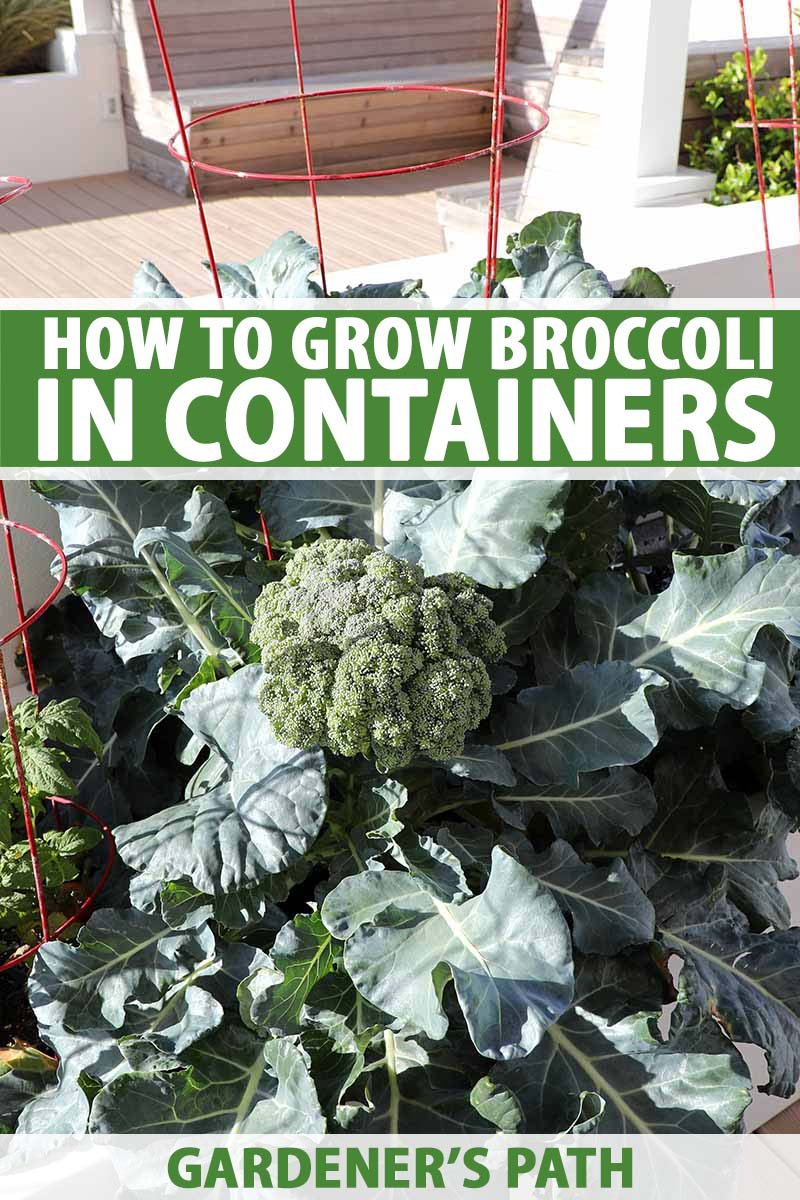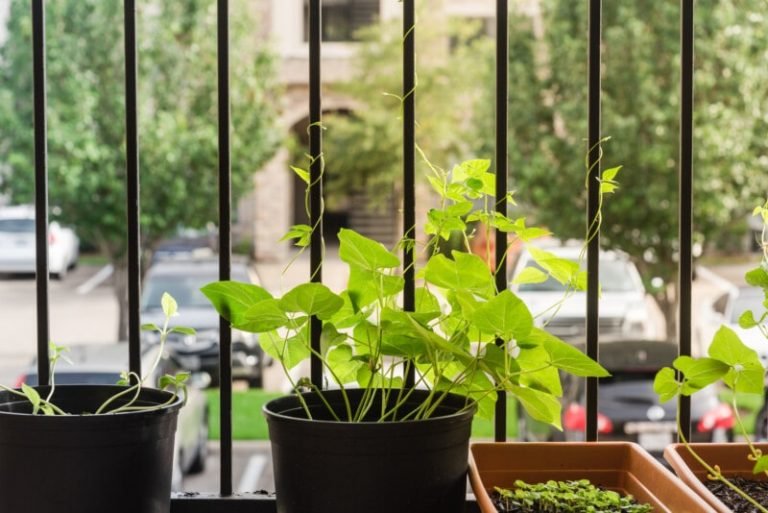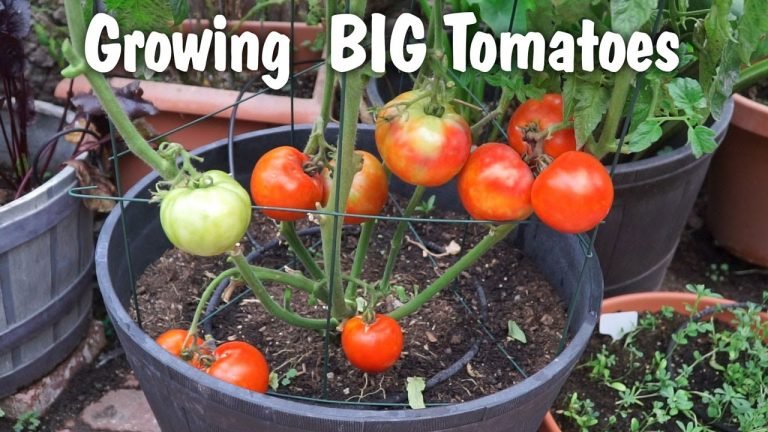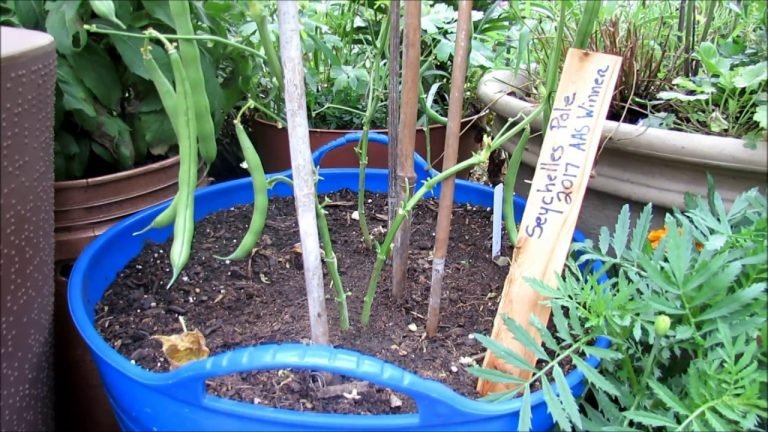how to grow broccoli in a pot – [Beginners Guide]
Hey there! Are you looking to add some green to your home and also want to enjoy some fresh, healthy broccoli? Growing broccoli in a pot is a great idea and it’s easier than you might think!
I’ve been gardening for a few years now and one of my favorite things to grow is broccoli. Not only is it packed with vitamins and nutrients, but it’s also a lot of fun to watch it grow from a tiny seedling to a big, beautiful plant.
One of the best things about growing broccoli in a pot is that you can do it on a balcony, patio, or even indoors. As long as the pot is big enough (at least 12 inches deep and wide) and has drainage holes, you’re good to go!
Another great thing about growing broccoli in a pot is that it’s easy to control the soil and water. You can make sure that your plant is getting the right amount of water and nutrients, which is especially important if you’re growing it indoors.
Overall, growing broccoli in a pot is a fun and easy way to enjoy fresh, healthy broccoli at home. Give it a try, you might be surprised how much you enjoy it!
Pot or container selection
When it comes to growing broccoli in a pot, the type of pot you choose is important for the plant’s growth and health.
A good option is a 12-inch deep and wide pot with drainage holes at the bottom. This size allows the roots of the broccoli plant to spread out and establish a good foundation for the plant to grow.
The pot should also be made of a material that allows for good drainage and air flow, such as terracotta or plastic. Avoid using metal pots as they can heat up quickly and dry out the soil.
It’s also important to note that broccoli plants need a lot of water, so make sure the pot you choose has enough capacity to hold enough water and soil. A pot with a capacity of at least 5 gallons is recommended.
In summary, when choosing a pot for growing broccoli, look for one that is at least 12 inches deep and wide, has drainage holes, and made of material that allows for good drainage and air flow such as terracotta or plastic. The pot should have a capacity of at least 5 gallons.
Make suitable soil mix
The type of soil you use to grow broccoli in a pot is crucial for the plant’s growth and health.
The best soil mix for broccoli is one that is well-draining and rich in nutrients. A good option is a soil-based potting mix that contains peat moss, vermiculite, and perlite. These ingredients will help to improve drainage and aeration, which are essential for the broccoli’s roots to thrive.
It’s also important to add some compost or well-rotted manure to the soil mix. These organic matter will help to provide the broccoli with the necessary nutrients to grow strong and healthy. It will also help to retain moisture in the soil.
When preparing the soil mix, it’s important to make sure that it’s neither too dry nor too wet. The soil should be moist, but not waterlogged. Overwatering can lead to root rot, which can be fatal to the plant.
In summary, when choosing a soil mix for growing broccoli, look for one that is well-draining, rich in nutrients and contains a mixture of soil-based potting mix that contains peat moss, vermiculite, and perlite. Also, add compost or well-rotted manure to provide necessary nutrients and retain moisture. Make sure the soil is moist but not waterlogged.
How to plant the broccoli?
Growing broccoli in a pot at home is a fun and easy way to enjoy fresh, healthy broccoli. Here is a step-by-step guide to help you get started:
Step 1: Choose the right pot
Choose a pot that is at least 12 inches deep and wide, has drainage holes, and is made of a material that allows for good drainage and air flow such as terracotta or plastic. The pot should have a capacity of at least 5 gallons.
Step 2: Prepare the soil mix
Mix a soil-based potting mix that contains peat moss, vermiculite, and perlite. Add some compost or well-rotted manure to provide the broccoli with the necessary nutrients to grow strong and healthy. Make sure the soil is moist but not waterlogged.
Step 3: Plant the broccoli
Fill the pot with the prepared soil mix and make a hole in the center of the pot. Place the broccoli seedling in the hole and gently press the soil around the seedling. Water the seedling well.
Step 4: Provide proper light and temperature
Broccoli needs at least 6 hours of direct sunlight a day. If you are growing it indoors, you should place it near a sunny window or use artificial lighting. The ideal temperature for growing broccoli is between 60 to 65°F (15-18°C) during the day and 50 to 55°F (10-13°C) at night.
Step 5: Water and fertilize
Keep the soil moist but not waterlogged. Water the broccoli when the top inch of soil is dry. Use a balanced liquid fertilizer every 2-3 weeks to provide the plant with the necessary nutrients.
Step 6: Harvest
Broccoli is ready to harvest when the head or floret is firm and tight. Cut the head off with a sharp knife, leaving about 4 inches of stem on the plant. The side shoots will continue to grow and produce additional heads.
With these simple steps, you should have fresh, healthy broccoli growing in your own home in no time!
How to care for broccoli?
Watering Requirement
Broccoli needs a consistent amount of water to grow properly. It’s important to keep the soil consistently moist but not waterlogged. Water the broccoli when the top inch of soil is dry. A good way to check the moisture level is to stick your finger in the soil, if it feels dry, it’s time to water. Overwatering can lead to root rot, which can be fatal to the plant.
Fertilizer Requirement
Broccoli plants need a steady supply of nutrients to grow strong and healthy. A balanced liquid fertilizer every 2-3 weeks is recommended. You can also mix in a slow-release fertilizer into the soil at planting time. Avoid over-fertilizing as it can lead to leafy growth rather than head development.
Sunlight Needs
Broccoli needs at least 6 hours of direct sunlight a day to thrive. If you are growing it indoors, you should place it near a sunny window or use artificial lighting. If you’re growing it outdoors, place it in an area that gets full sun.
Pruning & Training
Broccoli plants should be trained to grow a single central stem by pinching off any side shoots that appear. This will help the plant to focus its energy on producing a large central head. When the central head is ready to harvest, cut it off with a sharp knife, leaving about 4 inches of stem on the plant. The side shoots will continue to grow and produce additional heads.
Additional care
Keep the soil moist but not waterlogged. Water the broccoli when the top inch of soil is dry. Use a balanced liquid fertilizer every 2-3 weeks to provide the plant with the necessary nutrients. Provide the plant with at least 6 hours of direct sunlight a day. Prune and train the plant to grow a single central stem. Keep an eye out for pests and diseases, and treat them accordingly.
By following these simple steps, your broccoli plants will be healthy and thrive in their pots. Remember to be patient and enjoy the process of growing your own fresh and healthy broccoli at home.
Common problems
Pests
Common pests that can affect broccoli grown in a pot at home include aphids, caterpillars, and mites. These pests can damage the leaves and reduce the yield of the broccoli. To control pests, you can use insecticidal soap or neem oil. It’s also important to regularly inspect the plants for signs of pests and take action immediately if any are found.
Insects
Insects like whiteflies and thrips can also damage broccoli plants. They suck the sap from the leaves, which can cause the leaves to yellow and the plant to weaken. To control insects, you can use yellow sticky traps, or an insecticidal soap or neem oil.
Diseases
Broccoli can be affected by a variety of diseases, including clubroot and black rot. Clubroot is caused by a soil-borne fungus that affects the roots of the plant, causing them to swell and become distorted. Black rot is a bacterial disease that causes the leaves to turn black and the plant to wilt. To prevent disease, you should practice good sanitation and avoid overcrowding of plants.
Poor Production
Poor production can be caused by a number of factors, including lack of sunlight, poor soil quality, and improper watering. To ensure good production, make sure the broccoli plants are getting at least 6 hours of direct sunlight per day, and that the soil is well-draining and rich in organic matter. Water the plants regularly, but be careful not to over water them, as this can lead to root rot.
Other issues
Other issues that can affect broccoli grown in a pot at home include nutrient deficiencies and temperature fluctuations. Proper fertilization and regular monitoring of temperature can help prevent these issues. To ensure broccoli plants receive the proper nutrients, it’s a good idea to use a balanced fertilizer. Keep an eye on temperature, broccoli prefers a cool climate around 60-65F, temperatures above 75F can cause the plants to bolt and form seeds instead of producing heads.
Harvesting & storing homegrown broccoli
When to Harvest
Broccoli is ready to harvest when the heads are firm and tight, and before the buds begin to open and turn yellow. The heads should be about 6-8 inches in diameter, and the stalks should be about an inch thick. The best time to harvest broccoli is in the morning, when the temperature is cool and the heads are full of water.
How to Harvest
To harvest broccoli, use a sharp knife or garden shears to cut the head from the plant, leaving about 4 inches of stem attached. Be sure to cut the head of the broccoli at an angle, to prevent water from collecting on the cut surface. Also, it’s important to harvest the side shoots that appear after the main head is cut, they will continue to grow and produce more heads.
How to Store
Broccoli should be stored in the refrigerator, wrapped in plastic or placed in a plastic bag. It can be stored in the refrigerator for up to a week. To extend the storage life, broccoli can also be blanched and frozen. To blanch broccoli, immerse it in boiling water for 2-3 minutes, then transfer it to ice water to cool. Drain the broccoli well and then place it in airtight containers or freezer bags before storing it in the freezer.
Knowing when they are ready for harvesting
- Check the head size, it should be about 6-8 inches in diameter.
- Check the stalks, they should be about an inch thick.
- Check the buds, they should be tight and before they begin to open and turn yellow.
- Check the color, the head should be green and firm.
It’s important to regularly check the broccoli plants for readiness, as over-mature heads can become tough and woody, and under-mature heads may not develop properly. Harvesting at the right time will ensure that the broccoli is at its peak of flavor and texture.
Growing broccoli in container – Conclusion
Conclusion
Growing broccoli in a pot at home is a great way to enjoy fresh and healthy vegetables all year round. With proper care and attention, you can successfully grow and harvest broccoli in a pot.
To grow broccoli in a pot, it’s important to:
- Choose a large pot with good drainage
- Use high-quality soil that is well-draining and rich in organic matter
- Provide at least 6 hours of direct sunlight per day
- Water regularly and avoid over-watering to prevent root rot
- Practice good sanitation and avoid overcrowding of plants to prevent disease
- Harvest when the heads are firm and tight, and before the buds begin to open and turn yellow
- Store in the refrigerator or blanch and freeze for longer storage
By following these tips, you can successfully grow and harvest broccoli in a pot. The rewards of homegrown broccoli are great, not only will you have a delicious and healthy vegetable, but also the satisfaction of having grown it yourself. Give it a try and enjoy the taste of freshly harvested broccoli.








